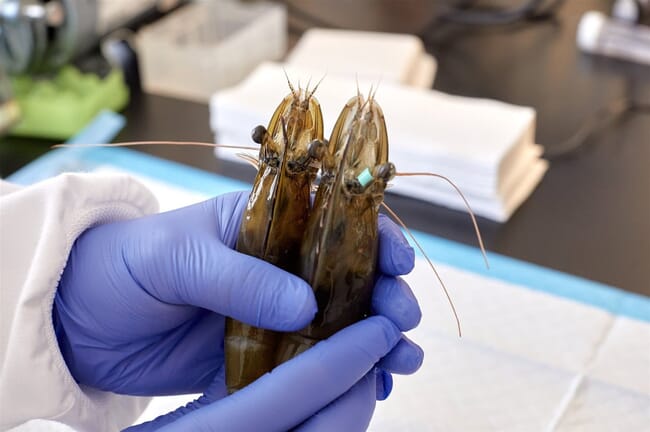
© CAT
The Centre for Aquaculture Technologies' state-of-the-art facility features a cutting-edge genome editing lab and tank space, effectively quadrupling CAT's shrimp research capacity. The facility's opening sets the stage for revolutionising shrimp genetic performance and accelerating next-generation breeding through the application of innovative genome editing techniques.
Genome editing represents the next frontier in genetic improvement – it allows for the precise and rapid recreation of changes that would occur in nature. CAT is committed to helping shrimp producers do more with less through the development and application of genome editing technology and methodology, which can solve problems that conventional breeding methods are unable to address and substantially accelerate the pace of genetic improvement.
Facility manager Matt Stone stated in a press release: “The increase in rearing and research capacity means we are even better prepared to deliver innovations to boost efficiency in the shrimp industry through genome editing. Our team is excited to be working in this new space and looks forward to helping clients achieve their goals.”
CAT CEO Dr John Buchanan touched on the broader impacts of this move, adding: “With this investment, we have further solidified our position as a leader in the delivery of impactful genetic solutions to help shrimp producers feed the world more efficiently.”
The new facility is dedicated to the memory of Dr Richard H Towner, an exceptional researcher in the field of genetics who served as a trusted advisor to CAT. Dr Towner's invaluable contributions to the aquaculture industry and his mentorship of numerous researchers have greatly propelled advancements in the field.



